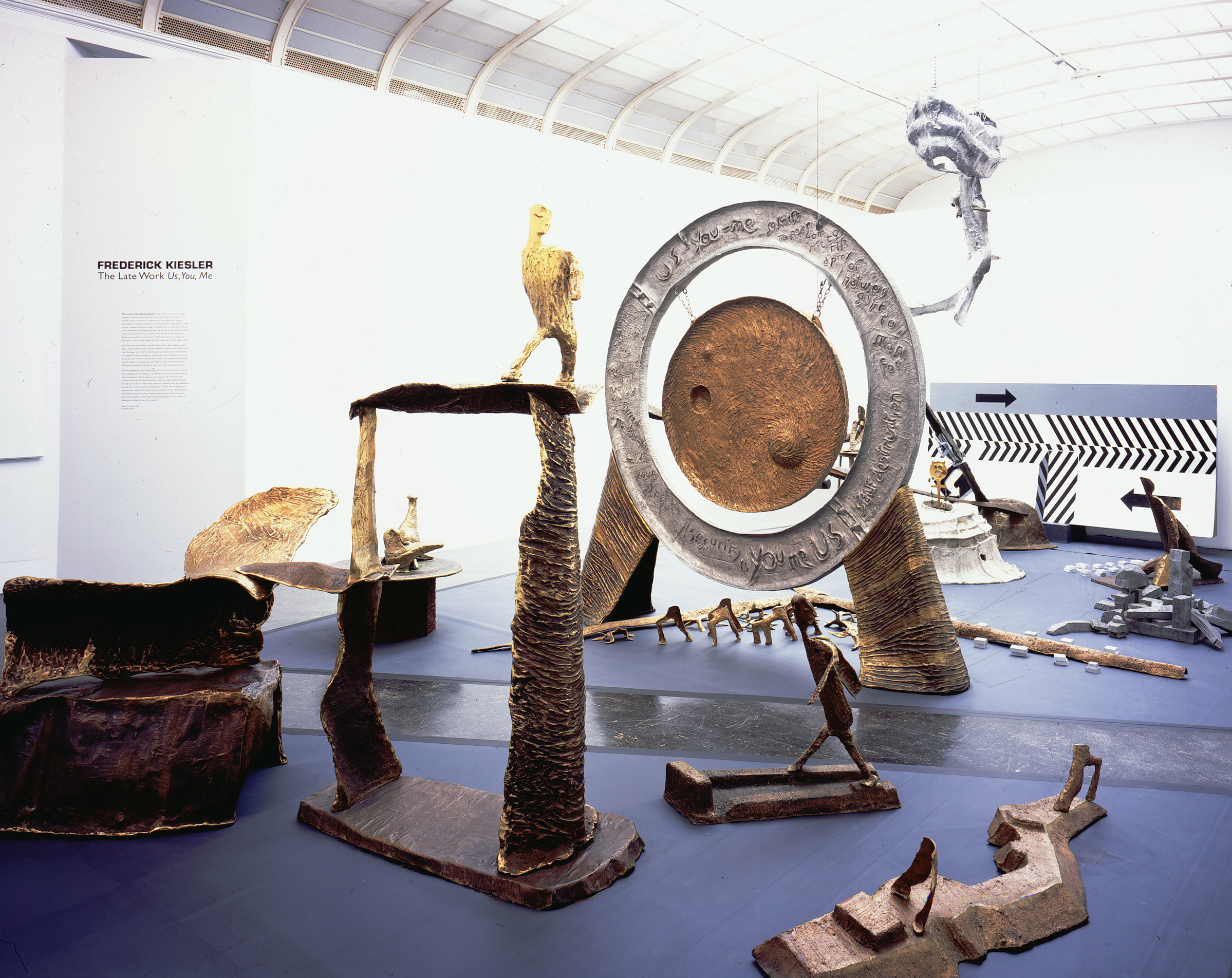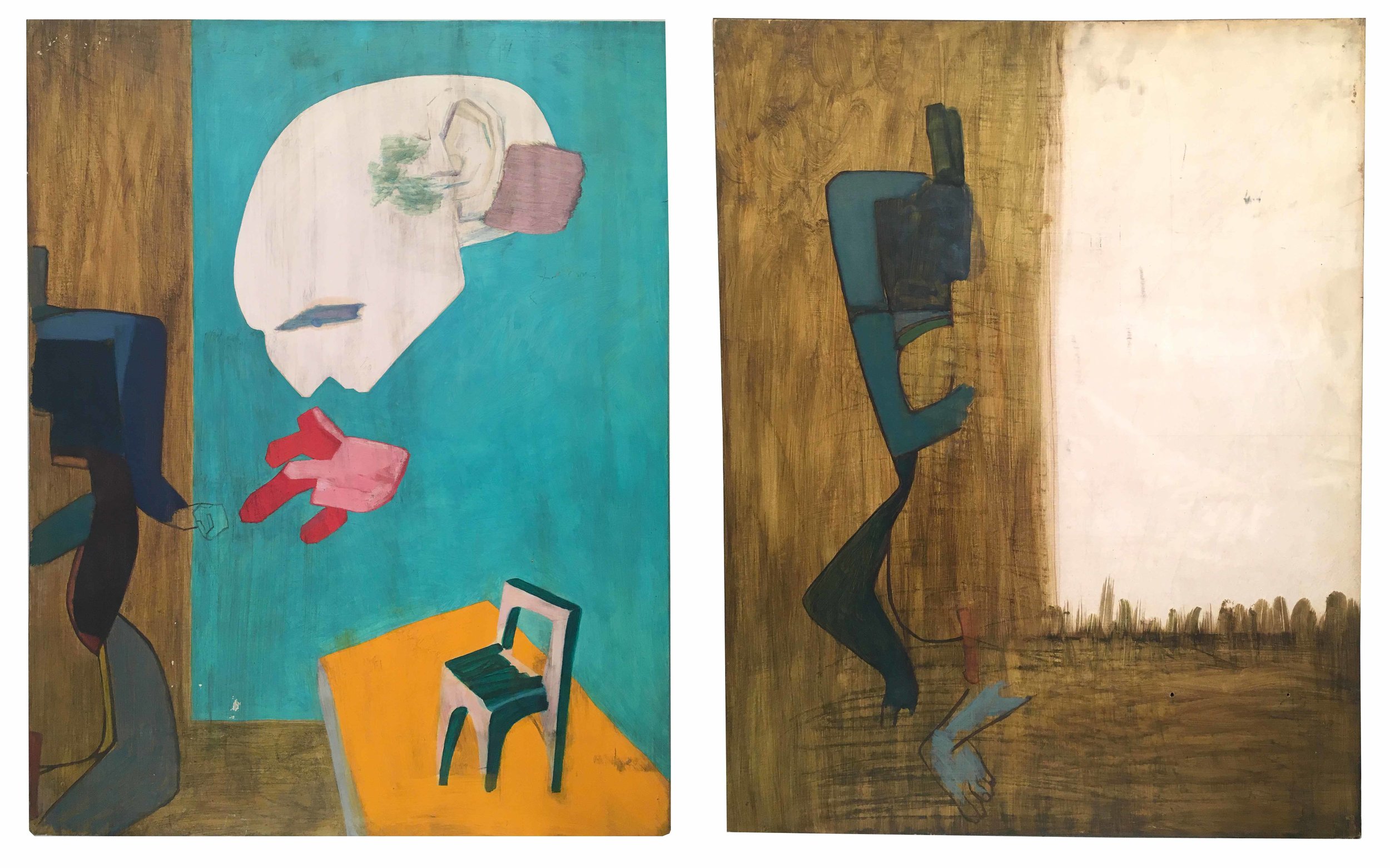THE ESTATE of FREDERICK KIESLER
(1890 - 1965)
Frederick Kiesler was born in 1890 in Tschernovitz, formerly part of the Austro-Hungarian Empire, which today belongs to the Ukraine. He studied at the Technische Hochschule (1908-09) and at the Akademie der Bildenden Künste (1910-1912) in Vienna. In the following years, he was heavily engaged in theatre, in both Vienna and Berlin, designing stages and choreographing performances. He became a member of the De Stijl group in 1923 and in the following year, he arranged the world premiere of the 16-minute film Ballet mécanique directed by Dudley Murphy and Fernand Léger, with Man Ray, in Vienna. Kiesler moved to New York City in 1926, where he remained until his death in 1965. There he collaborated with the Surrealists, completing landmark projects with Marcel Duchamp and Andre Breton, for example. From 1937 to 1943, Kiesler was the director of the Laboratory for Design Correlation within the Department of Architecture at Columbia University. One of his most famous projects was completed in 1942 when he designed Peggy Guggenheim's The Art of This Century Gallery in New York. In 1952, The Museum of Modern Art named Kiesler as one of "the 15 leading artists at mid-century." While his career spans design, architecture, painting, sculpture, and installation, Kiesler remained loyal throughout to his vision of a biormorphic, endless space, in which the human mind would be uninhibited. This theory, which he termed ‘Correalism’, was the basis from which Kiesler drew during the creation of his entire oeuvre.
The work of Frederick Kiesler has been subject of numerous museum exhibitions worldwide, including at the Solomon R. Guggenheim Museum; Whitney Museum of American Art; Centre Georges Pompidou; MAK, Vienna, and the Martin Gropius Bau, Berlin, among others. His work is collected in depth by the Museum of Modern Art, the Solomon R. Guggenheim Museum, the Whitney Museum of American Art, and the Philadelphia Museum of Art, among others.
Frederick Kiesler, Large Horse Galaxy, 1954, Mixed media installation consisting of six wall panels, one table, one floor piece and one ceiling piece. Dimensions vary. Collection of The Estate of Frederick Kiesler, New York
"If the reassessment of values in these tense times is of necessity for each and all of us, one is convinced that the artist’s work too can no longer be placed in isolation: that art must strive again to become part of daily experience.
It seems, therefore, that painters, sculptors, and architects must conceive their work – as part of the world."
— Frederick Kiesler (1890-1965)
Frederick Kiesler and his Model for the Endless House, 1959, Cement and wire mesh with plexiglass. Collection of the Whitney Museum of American Art.






![Frederick Kiesler (1890-1965) Galaxy D , 1953 [August 1,2, 1953] Tempera and oil on wood 4 Panels, dimensions variable. Each panel is signed, verso: "Kiesler" Collection of The Estate of Frederick Kiesler, New York](https://images.squarespace-cdn.com/content/v1/5c6444b9e4afe91469c174f8/1555956945238-722HK131MQC1SUA0WTSP/GALAXY_D_2016.jpg)



![Frederick Kiesler (1890-1965) Galaxy for Lillian and Alice , 1953 [September 15, 1953] Tempera and oil on wood Four parts: A: 27 1/8 x 19 inches / 68.9 x 48.3 cm B: 27 1/8 x 21 3/4 inches / 68.9 x 55.2 cm C: 22 3/8 x 12 inches / 56.8 x 30.5 cm D:](https://images.squarespace-cdn.com/content/v1/5c6444b9e4afe91469c174f8/1555958267884-BUK6TIRG671V5OC0WN5J/FK9005.jpg)

